Honor Award
Ichi-Go Ichi-E Garden Courtyard
Michael Carey, Assoc. ASLA; Jason Ceralde, Assoc. ASLA; Keriann Head, Assoc. ASLA; Talya ten Brink, Assoc. ASLA; Helen Wilson, Student ASLA; Wan Fong Wu, Assoc. ASLA, Undergraduate, University of Washington
Faculty Advisors: Iain Robertson, ASLA; Amy Wagenfeld, ASLA and Daniel Winterbottom, FASLA
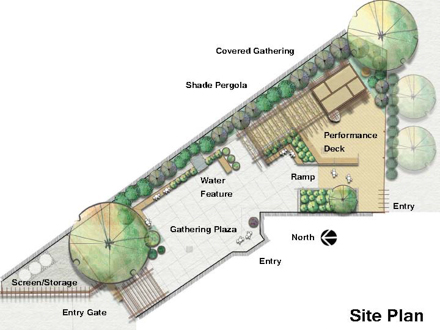
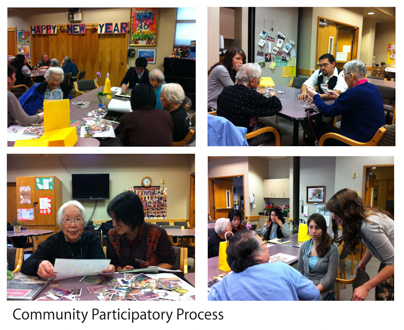
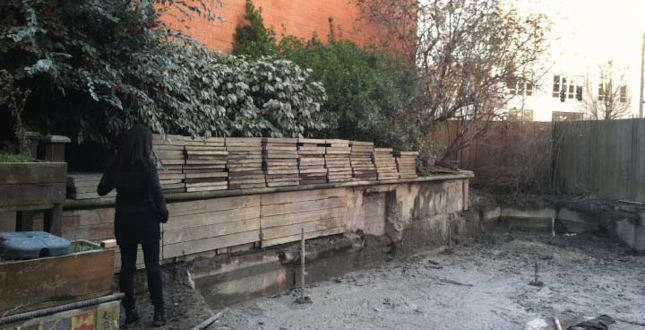
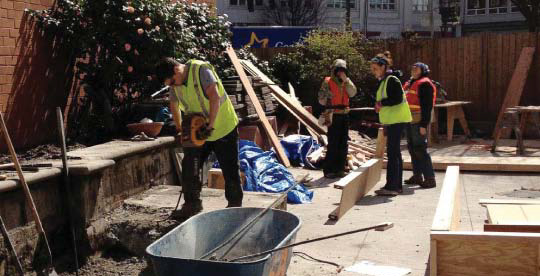
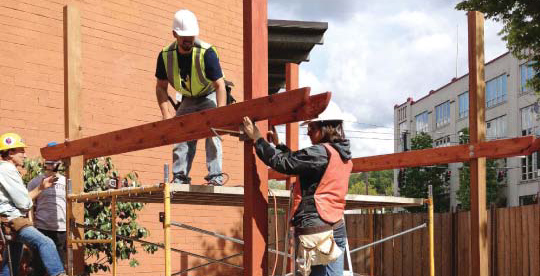
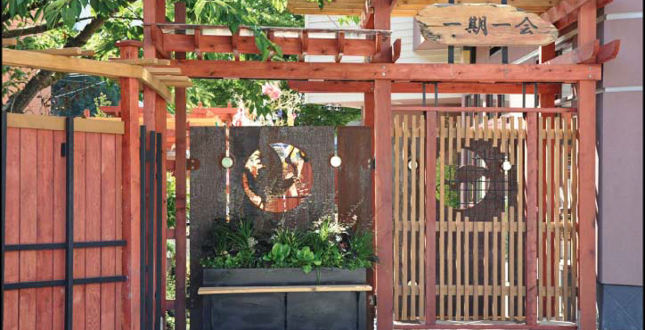
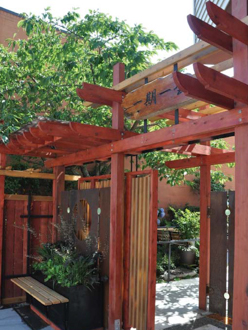
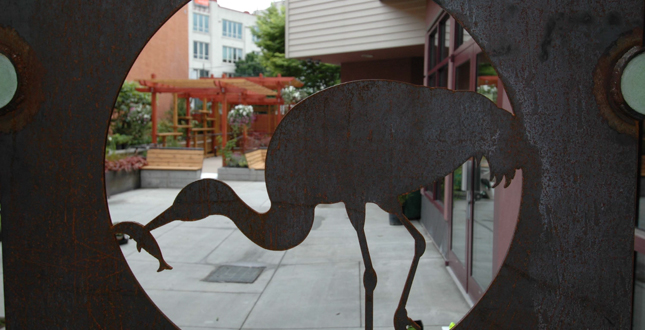
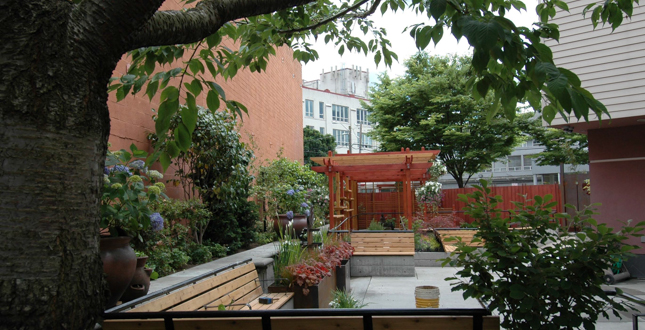
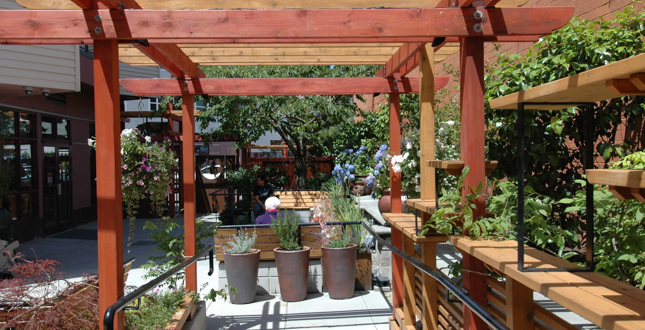
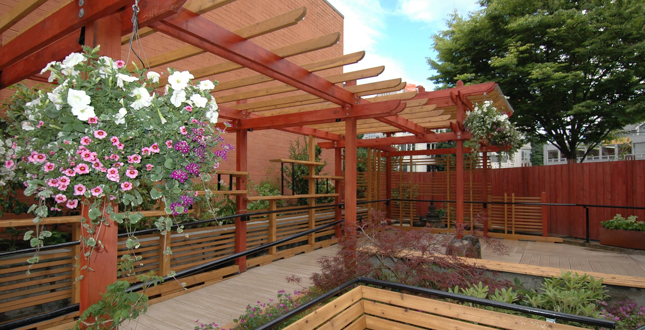
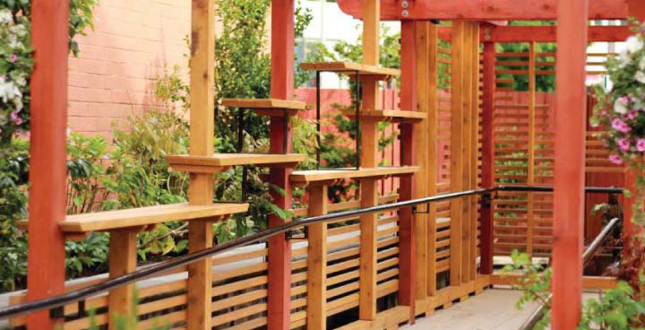 Close Me!
Close Me!Resident’s Shelving Under the Pergola
Download Hi-Res ImageImage: Daniel Winterbottom
Image 12 of 15
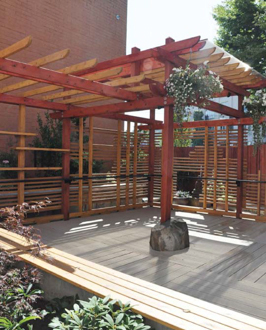
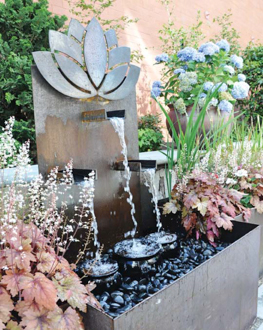
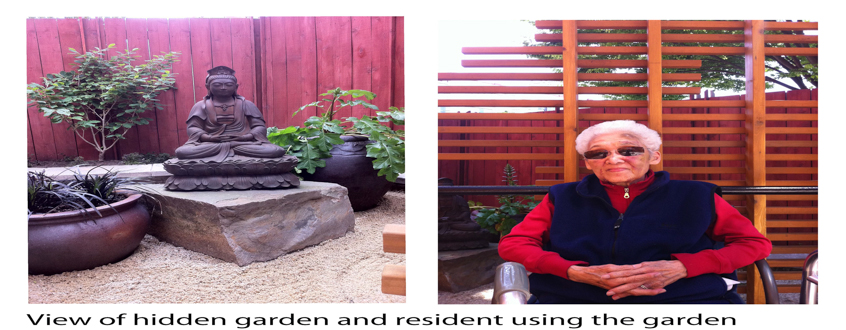 Close Me!
Close Me!View of Hidden Garden and Resident Using the Garden
Download Hi-Res ImageImage: Daniel Winterbottom
Image 15 of 15
Project Statement
Through an intense collaboration between students and residents of Nikkei Manor, the “Ichi-Go Ichi-E” garden addresses the unique needs of the elderly Japanese American residents. The team integrated the therapeutic and restorative benefits of nature, referenced important cultural traditions and provided universal access to the elderly users. The process necessitated dynamic and challenging interactions between students and residents, students and design and ultimately between design and building. The resulting garden nurtures contemplation, growth, rehabilitation and renewal.
Project Narrative
Nikkei Manor,an assisted living community in Seattle, Washington serves over fifty elderly Japanese Americans residents. Nikkei Manor offers care and support through collective and individual activities for residents, staff, family members and members of the Kokkori Kai day program. An adjacent exterior courtyard is utilized by the residents and care providers and is used by the surrounding community for ceremonial and festival events. Prior to the project, the courtyard was badly damaged through a subsidence resulting in a sink hole and had been under-utilized and difficult to access prior to this event. There was minimal seating, poor circulation and inappropriate paving surfaces. The client requested that the garden remain adaptable and accommodate both group and individual programming for residents, visitors, or staff. The garden had to balance accessibility (for clients with limited mobility) with the desire to create a peaceful and tranquil environment and have a space to host large gatherings. Over ten weeks, the student team worked to refine a design process that effectively communicated the desires of the client to the designers. Students arranged client meetings, hosted several interactive focus groups and photo preference exercises with the residents using images to overcome some of the language and cognitive challenges. They then conceptualized and presented five design proposals which were synthesized these into a final design, culminating in construction documents. In the following ten weeks, the student team constructed all of the elements in the “Ichi-Go Ichi-E” garden.
Design Program
The primary objective was to create a space that increased the health, happiness, and well-being of Nikkei Manor residents that incorporated culturally appropriate imagery and symbology. Secondary goals included ways to encourage residents to explore the outdoors while sustaining feelings of safety and security, facilitate group activity, and create a pleasant, engaging space for residents to host their visitors. It was important to the client that this space incorporated smaller tranquil areas while accommodating larger groups as needed. Nikkei Manor currently offers arts and crafts, drum circles, games, and celebration, all events that can now take place in the courtyard. The garden also encourages socialization, nature interactions and a place to find a counterpoint to the institutional qualities of the facility.
Design Intent
The garden experience begins at its gated entrance, a sliding wooden gate beneath a carved sign reading, “Ichi-Go Ichi-E” that resembled Japanese timber framing and used colors culturally appropriate in the symbolic references. In front and to the side of the gate are two steel screens with siloqueted cranes, symbols of longevity and joy that restrict views into the space and ensure security and sense of privacy. The path into the garden winds through these screens altering the users direction into the garden, that emphasizes the sense of entry and novelty when one sees the entire garden for the first time. The ground plane at this location is compacted crushed aggregate set between a banding of pavers. This textural difference acts as a tactile warning for those transitioning into and from the garden and all openings are sized for wheelchair access. The open courtyard is lined with linear benches nestled among lush plantings along each side. An existing, mature cherry tree anchors the northeast corner, framing the view and providing shade to the residents during the sunnier months. Plantings extend beyond the sides of the benches and into a raised bed along the border of the adjacent property and screening the abutting wall. Placed between these benches are a series of steel planter boxes and a water feature that offers sensory experiences for the residents and buffers the noise from the surrounding streets. The entrance to the garden from the residence is located directly across from this fountain, and this focal point encourages residents to enter the garden and enjoy the sounds, textures and activities. Residents are encouraged to interact with others and this flexible space encourages them to do so at a variety of scales. The edge of this courtyard is defined on its southern end by a raised planting bed with built in benches. The simple division of spaces supports individual experience in the smaller niches and the circulation system encourages exploration of the rest of the garden. Along either side of this central planting bed are two ramps leading up to a raised deck, framed along its edges with additional benches. These benches face towards the southern corner of the garden and a pergola-covered area flanking this space is enclosed on two sides with wooden screens and hidden gardens. This part of the courtyard receives the most sunlight and the pergola provides additional shade for the residents. Wooden shelves are suspended along these screens providing a place for residents to display their own potted plants. The raised deck is used for performances, classes and when not crowed for a quite refuge for one of two residents or a small family. In various locations windows carved among the wooden slats reveal the smaller gardens beyond the deck. While the “Ichi-Go Ichi-E” garden is limited in size, it is full of choices and places to discover and enjoy. It offers residents a sense of control, independence and and retreat. It is now a gathering place for events and an intimate space to explore with friends and family. The entire space is accessible to the handicapped, fully equipped with handrails along all walking paths that extend along the back of each bench as a continual line. Each element constructed and installed on site had the resident’s safety in mind and a healthier lifestyle as its goal.
Implementation
Students worked for twenty weeks under the direction of their instructors and a teaching assistant to complete the design and build project. Work included community outreach and input (2 weeks), schematic design and final design development (4 weeks), construction documents (4 weeks), demolition (2 weeks), and construction (8 weeks). The process began with site visits to examine the existing conditions, opportunities, and limitations of the site. An interactive input session was held to gather information regarding design aesthetics, program elements, and the specific desires of the client. These sessions were open to staff, caregivers, residents and their family members. Though many Nikkei do not speak English, the students were able to creatively gather information through visual aids and participatory activities. Students conceived schematic designs by incorporating programmatic elements and presented these to board members and staff. Demolition included removing all existing vegetation, concrete slabs, and infrastructure. Construction began with the layout of formwork for concrete planters and bases for each of the benches. As these new forms gave shape to the courtyard, each additional element was a testament to the intricate planning and detailing by the students, and their enthusiasm to see their design visualized. All elements on site were designed and built by the students, professor and teaching assistant. After the construction of all wooden infrastructures, pouring of concrete, installation of water elements and vegetation, and fabrication of all steel planters, fountain, bench framework in the university’s metal shop, the Ichi-Go Ichi-E opened to the community of Nikkei Manor and the greater Asian American community in the International District of Seattle.
Additional Project Credits
Additional Contributors:
Pam Emerson
Dinah Gewalt
Myles Harvey
Jonathan Jue
Sam McIntyre
R. Nelli Newport
Leanne Retterath
Laura Roof
Melinda Jasmine Sabeti
Wuttiporn Lek Taksinvarajam
Sonia Tien
Macy White Center Blacksmith
Ohashi landscape Services
Advanced Irrigation
Ragen Associates
Product Sources
Plants – Molbak’s, Plant Farm, Ohashi Landscape Services, Plants Northwest, T & L Nursery, Vibrant Plants
Soils – Pacific Top Soils
Lighting –Vista Lighting, Horizon Distributors
Irrigation – Advanced Irrigation
Rocks- Marenakos Rock Center
Wood- Gray Lumber
Pots-Ragen & Associates




